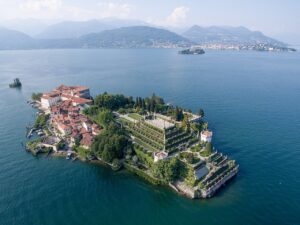ITALIAN LAKES
If asked to indicate the location of the Italian lakes on a map, the gaze of the majority of tourists would focus on the northern part of the country, specifically at the foothills of the Alps. In fact, it is here where you will find the highest concentration of lakes which, due to their attractive scenery and beautiful historical buildings, have become desirable destinations for international travelers.

However, as usual, we would like to uncover some special and almost unknown places in other regions, including a couple of unique places in the “hidden” south of our beloved Bel Paese.
THE FAMOUS ONES
The most renowned waters are a group of eight glacier lakes formed about 10,000 years ago at the end of the last glacial period. Among them are the three largest ones, and a little pretty one which you probably haven’t heard of.

Lake Como, locally known as Lario, is the third largest and deepest lake in Italy, and an iconic destination. With its peculiar upside-down “y” shape, this pre-alpine lake provides many reasons to visit. It offers numerous romantic locations along the shores, and several beauty spots are hidden in the hilly scenery.

We have already explored a unique corner of this lake with you in a previous article, but it would be a crime not to mention the beautiful villas such as Carlotta, with sculptures by Canova, and the gardens of the precious Bellagio. Swimming, kayaking, canoeing and other enjoyable watersports are available here, as well as both gentle and more adventurous hiking.
Shared by the two Italian regions of Piedmont and Lombardy, a section of Lake Maggiore is also in Switzerland and a visit to Locarno can easily be added to your itinerary. Much quieter than Lake Como, especially in the summer months, Lake Maggiore, the second largest in Italy, should be included in your holiday plans if you want to explore nature and history at a slower pace. Spectacular views of Mount Rosa, the highest mountain walls of the Alps, will accompany your activities on and around the lake.
Among the many options for visits in the area, we would like to invite you to travel a few miles west from the shore to visit the medieval village of Vogogna and its imposing 14th-century Visconti Castle. During its history it has had defensive and military functions and was later used as a prison. Today it is used for exhibitions and events.


You also shouldn’t miss a visit to the Borromean Islands, only a short ferry ride from Stresa—the “Queen” of the lake—with its baroque palace and its gorgeous “Italian” gardens with its displays of numerous types of plants and flowers.
Surely the most famous among international visitors is Lake Garda, which is not only the largest lake in Italy but probably also the one most associated with sports. Views of windsurfers sailing across the surface, taking advantage of the constant favorable winds, are commonly seen especially in the northern part of the lake around Torbole. Canoeing, kitesurfing, kiteboarding, and sailing are only some of the other watersports available here.

On the southern shore, you shouldn’t miss Sirmione, and a visit to its Scaligero Castle, named after the family of the rulers of Verona whose political power extended to this region. In Sirmione, you will also find the Grottoes of Catullus, the archaeological sites where the remains of the villa of the Roman poet, after whom they are named, are still visible.

Lake Garda also has a lot to offer on the eastern shore, which is in the Veneto region, as well as on the western shore, in the Lombardy region, where the famous Limone and Tremosine, with the stunning background of the Alto Garda Bresciano Park, are located.

The smallest of the eight bodies of water is Lake Orta, located in the far north-eastern corner of the Piedmont region, near Lake Maggiore. Covered by the shade of its large neighbor, this lake is a perfect destination for a tranquil break in a pleasant environment which is rich in history and spirituality.

You can enjoy its lovely historical center and admire the frescos on the buildings of the Piazza Motta before visiting the twenty chapels dedicated to the life of St. Francis, scattered across the wooded hills overlooking the lake, not far from the village.
Located a short distance from Orta San Giulio’s shore is the small San Giulio Island, with its monastery and Romanesque basilica. Here you can immerse yourself in a walking meditation along the “walk of silence”, a path which runs around the island.
Words by Elisa Spampinato


